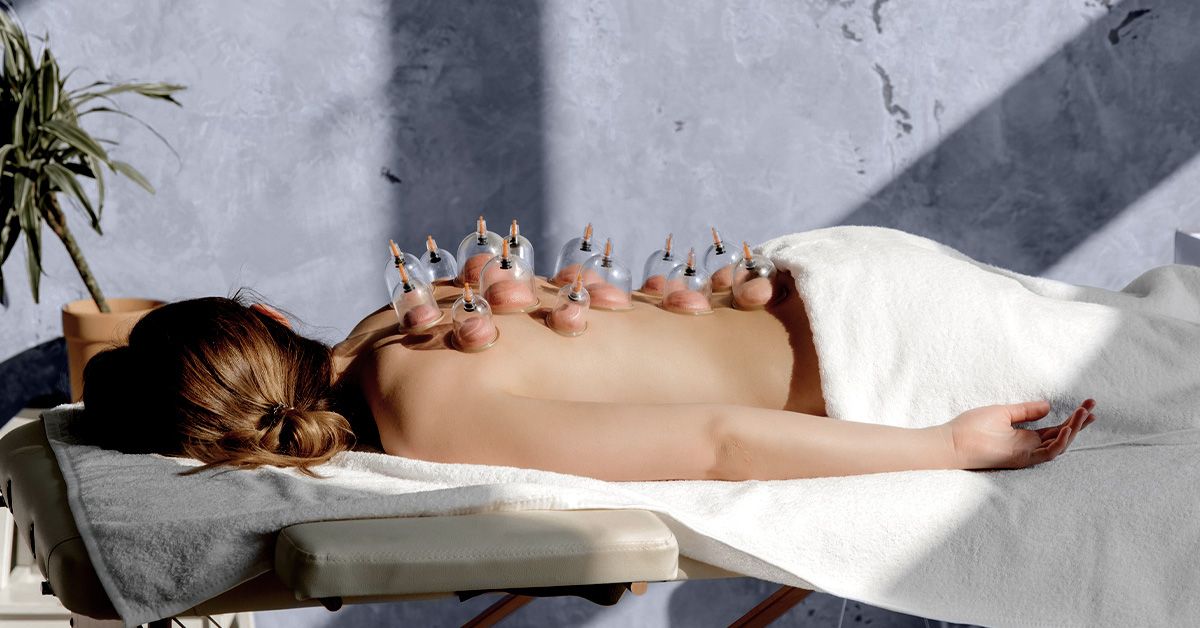Some research suggests cupping may have beneficial effects, including pain relief and increasing local blood flow. However, more research is necessary to understand cupping’s therapeutic potential and how it works.
Cupping therapy is a traditional Chinese and Middle Eastern practice that involves placing cups at certain points on a person’s skin. A practitioner creates suction in the cups, which pulls against the skin.
Cupping can either be dry or wet. Wet cupping involves puncturing the skin before starting the suction, which removes some of the person’s blood during the procedure.
Cupping typically leaves round bruises on a person’s skin, where blood vessels burst after exposure to the procedure’s suction effects.
A
Although cupping therapy has its roots in traditional medicine, professionals
Cupping may offer the following potential benefits.
Pain relief
A 2020 systematic review examined the benefits of cupping for chronic pain. Research in the review suggests cupping may offer short-term pain relief and benefits for functional disability in people with chronic pain compared to no treatment.
However, the review authors highlight that this evidence is limited due to a lack of diversity and variation in the studies and a risk of bias. Two clinical trials in the review also found no difference between cupping and sham cupping.
The authors conclude that cupping may have therapeutic potential, but further research is necessary — particularly studies comparing cupping’s effectiveness against controls and other current treatment options.
Although the review authors suggest that cupping may be a promising therapy for pain-related conditions, they highlight that most supportive evidence is low quality and future high quality research is necessary.
A 2022 review of three studies also highlights moderate evidence that dry cupping helps with pain and function in people with plantar fasciitis, compared to electrical stimulation and therapeutic exercise.
Researchers
Skin conditions
A 2023 review suggests cupping therapy may offer potential benefits for skin conditions such as:
However, the authors highlight that current evidence is of low quality, and further research is necessary.
Some people
Sports recovery
A
The study highlights research suggesting that cupping therapy has the following effects, which may help with exercise-induced muscle fatigue:
The authors suggest that a lack of clinical practice guidelines for cupping therapy may contribute to inconsistent outcomes and call for further research.
A
Although they concluded that both therapies offered beneficial effects on increasing hamstring length, study participants considered cupping better for improving hamstring flexibility.
A 2021 review of 22 studies suggests cupping therapy may be useful for musculoskeletal and sports rehabilitation due to its ability to increase local blood flow and relieve pain. However, the authors highlight that the evidence is moderate-to-low.
Other uses
Research suggests that wet cupping,
Healthcare professionals
Current evidence suggests that wet and dry cupping techniques may offer benefits for pain- or inflammatory-related health conditions. However, most of this evidence is limited or of low-to-moderate quality.
Further research, including high quality studies and clinical trials,
Professionals
Preventable side effects may occur due to errors involving cupping instruments or sterile techniques. Nonpreventable side effects may occur due to individual reactions to this therapy.
Infection may be more likely with wet cupping since it requires breaking the skin.
If a person has any of these side effects following cupping therapy, they should speak with a medical professional.
Who should avoid cupping therapy?
- people with certain health conditions, including
- people with implanted electronic devices, such as a pacemaker
- pregnant people
- children
- older adults
- those having anticoagulant treatment
People can speak with a healthcare professional to see if wet or dry cupping may be a safe and suitable therapy for them.
Cupping therapy
The exact method and amount of suction
People should not perform cupping therapy directly over areas with the following:
People should also ensure they properly clean and sterilize cupping instruments after use.
People should speak with a healthcare professional if they wish to try cupping therapy. Attempting cupping therapy at home may lead to preventable side effects, which can involve incorrect application or techniques.
How to do wet cupping therapy
Wet cupping therapy is
Certain healthcare professionals, such as massage therapists, will not typically offer wet cupping therapy, because it involves bloodborne pathogenic training.
People should not attempt wet cupping therapy by themselves due to the potential risk of infection and other side effects and complications.
Instead, people can speak with specific healthcare professionals, such as acupuncturists, about the type of cupping they offer if they are interested in wet cupping.
Is cupping therapy safe?
Healthcare professionals
Some people may also experience side effects such as headache, nausea, and fainting, due to their individual response to the therapy. Wet cupping may pose a higher risk of infection than dry cupping.
Is cupping therapy painful?
Cupping therapy
Wet cupping involves shallow cuts in the skin, followed by suction to draw blood. This, like the suction in dry cupping, may cause soreness in the area.
How long does cupping therapy take to work?
A
People should speak with a healthcare professional for more information about cupping therapy’s effectiveness and the potential treatment timeline.
Some evidence suggests that cupping therapy may help a person with certain health issues. However, more high quality studies are necessary to support these potential benefits.
Healthcare professionals may suggest cupping therapy alongside conventional treatment. However, they will not typically suggest replacing conventional treatment with cupping.
People can speak with a healthcare professional if they want to start cupping therapy. Pregnant people and people with certain health conditions, including cancer and blood disorders, may need to avoid this therapy.
link

